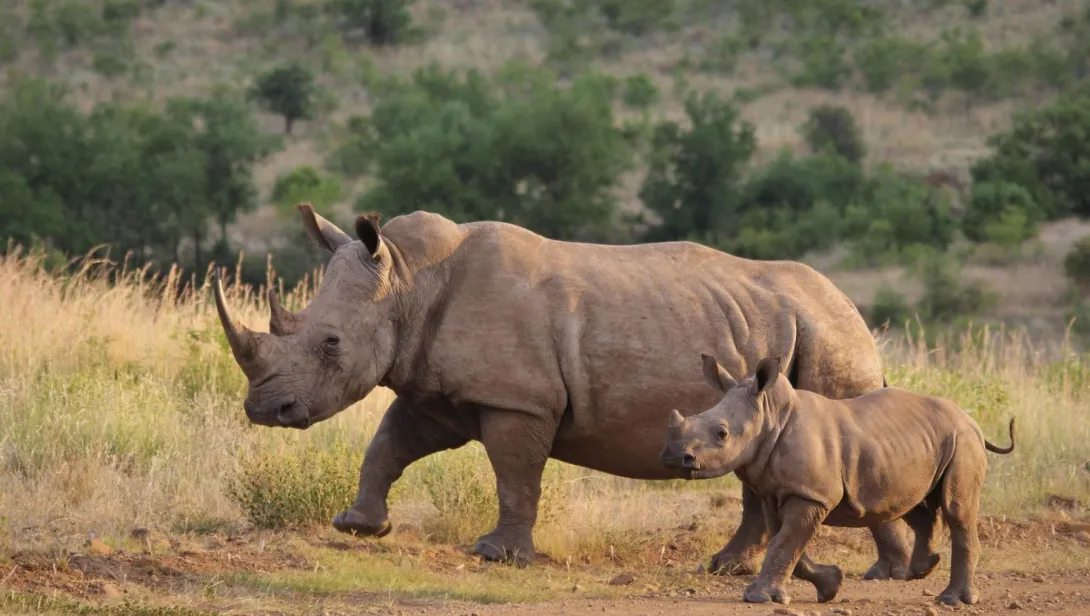Skip to main content
General Information
- The White Rhinoceros (Ceratotherium simum) is the largest species of rhinoceros.
- It is native to Africa, primarily found in South Africa, Namibia, Zimbabwe, and Kenya.
- White rhinos are divided into two subspecies: the Southern White Rhino and the Northern White Rhino.
- The Northern White Rhino is functionally extinct, with only two known individuals remaining.
- The species is classified as Near Threatened due to poaching and habitat loss.
Physical Characteristics
- White rhinos can weigh up to 2,300 kg (5,000 lbs).
- They have a distinctive broad, square-shaped mouth adapted for grazing.
- Their skin is thick and grayish, despite being called "white" rhinos.
- They have two horns, with the front horn being the largest.
- Their horns are made of keratin, the same material as human fingernails.
Diet and Habitat
- White rhinos are herbivores, primarily feeding on grasses.
- They require large, open grasslands to thrive.
- They need access to water sources for drinking and wallowing.
- They are most active during the morning and evening, avoiding midday heat.
Social Behavior
- White rhinos are semi-social and often found in small groups.
- Females and calves form stable herds, while males are more territorial.
- Males mark their territories with urine and dung piles.
- They communicate through vocalizations, scent markings, and body language.
Reproduction and Lifecycle
- Females give birth to a single calf after a 16-month gestation period.
- Newborn calves weigh around 40-65 kg (90-140 lbs) at birth.
- Calves stay with their mothers for up to 3 years.
- White rhinos can live up to 40-50 years in the wild.
Threats and Conservation
- White rhinos face severe threats from poaching for their horns.
- Habitat destruction due to human encroachment is a major concern.
- Conservation efforts include anti-poaching patrols and protected reserves.
- Captive breeding programs aim to increase population numbers.
- Several organizations work towards rhino conservation and protection.
Human Interaction
- White rhinos are often featured in zoos and wildlife sanctuaries.
- They play a crucial role in eco-tourism, attracting visitors to reserves.
- Efforts to reduce rhino horn demand are ongoing in many countries.
- Rangers and conservationists work tirelessly to protect rhino populations.
